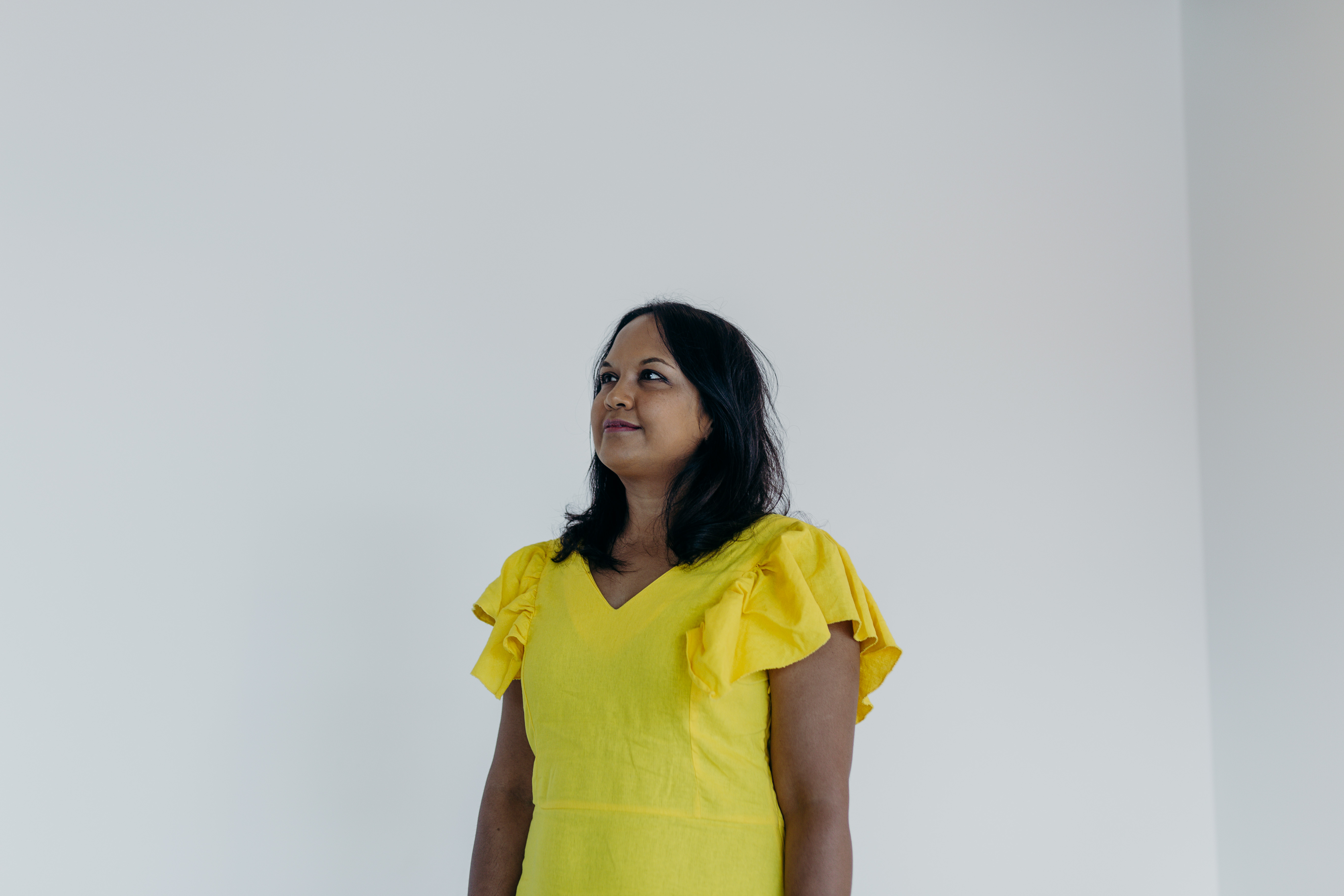Art
September 14, 2018
Suchitra Mattai and sugar bound
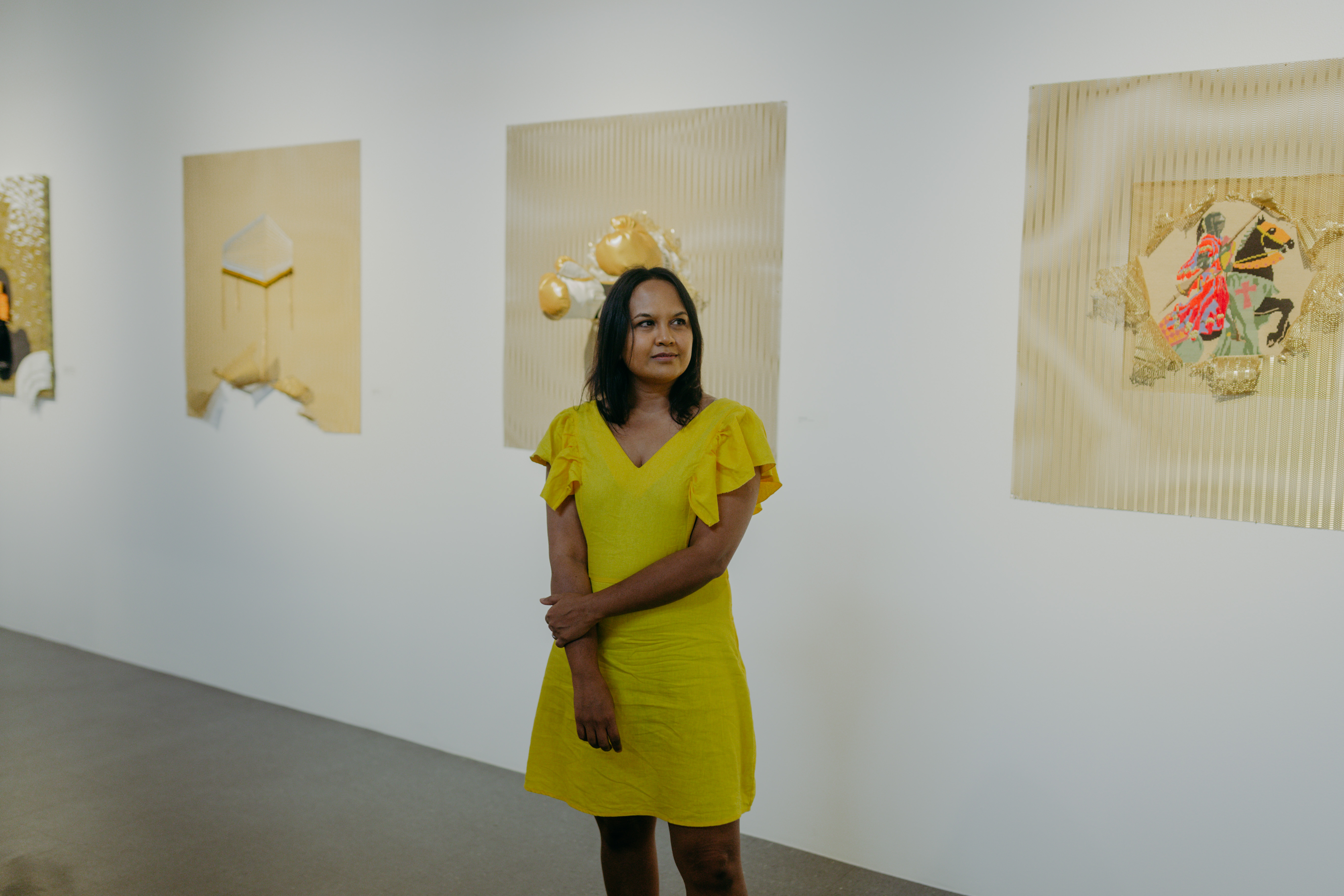
Suchitra Mattai, a multi-disciplinary artist who explores a wide range of ideas and media, invited us to the Center for Visual Art, MSU Denver where her solo exhibition titled sugar bound is on display. Mattai’s work varies in medium: painting, fiber, drawing, collage, installation, fractured furniture, sculpture, and video. Much of her work in sugar bound intermingles these mediums and utilizes an array of colors. Her work is rich in meaning, layered in symbolism, and examines the personal and the social implications of cultural ideas, such as colonialism, through landscape and narrative.
Mattai has a humble, honest, and entirely captivating way about her, as she discusses her life and work. She is reflective and wonderfully articulate. We got to chat with her in the middle of one of the galleries, amidst an abundance of visually and emotionally powerful artwork. She seemed to blend right in, wearing a charming, ruffled yellow dress.
We discussed her current exhibition, her evolution as an artist, the ideas that she communicates, and stories she tells in her work.
Suchitra, how did you become an artist?
That is a great question. I know a lot of artists say this but I think it’s true for many…I’ve always wanted to be an artist and perhaps have always been an artist. My immigrant family did not support that endeavor so I ended up studying math and statistics. I guess I never had role models who were artists. I couldn’t possibly have conceived of how one could be an artist. I entered a P.h.D. program in Art History (focusing on South Asian art) at the University of Pennsylvania and it was a way for me to get back in touch with my roots. Finally, one day, I was in a class and thought “this is ridiculous, what am I doing?” I shouldn’t only be studying art, I should be making it. I always made art through the years, but I would do it as a side project. I would make things in my apartment in New York, but would never show it to people. So, finally I bit the bullet and applied to grad school and since then, it has been so utterly rewarding!
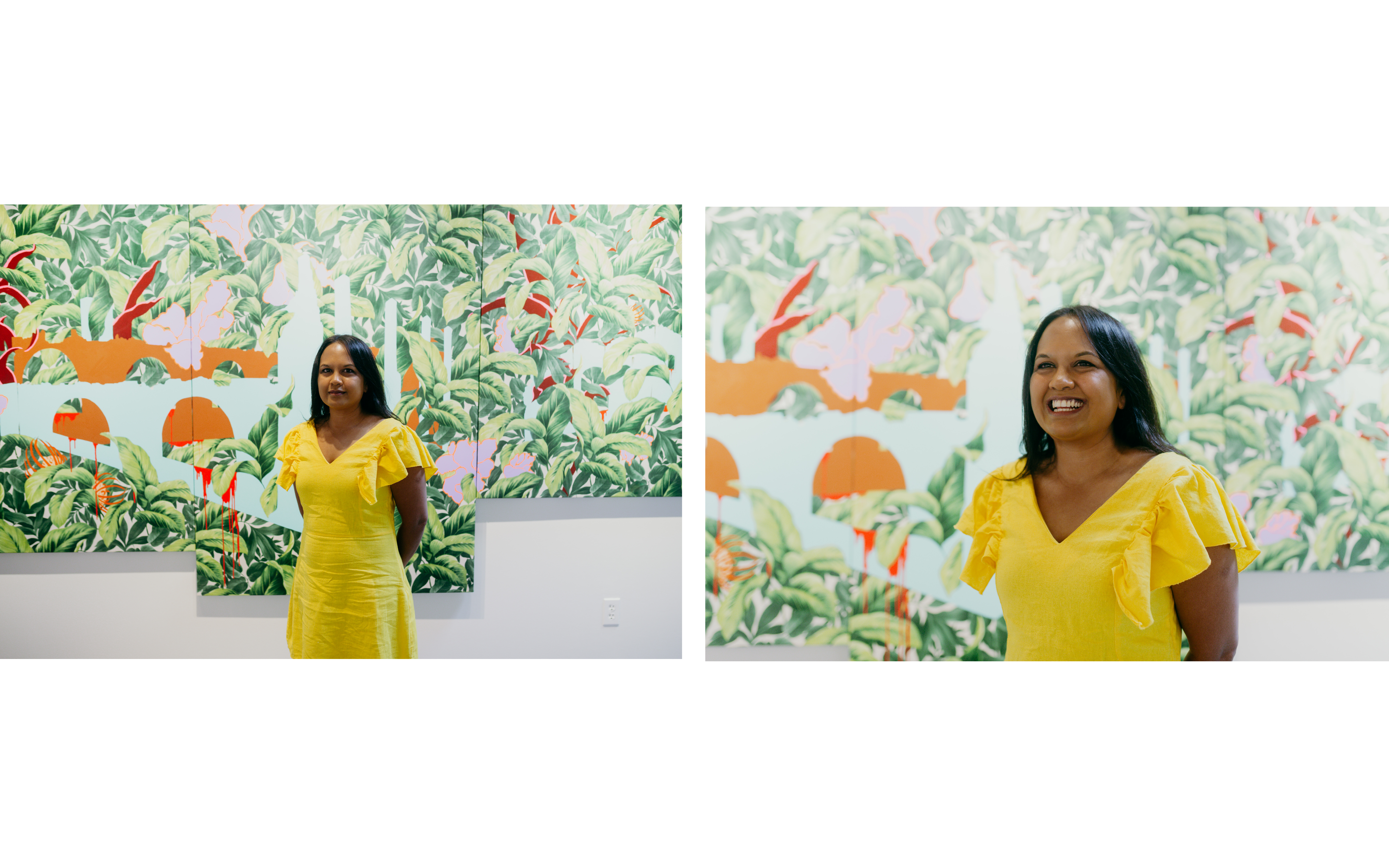
So, how was your family once you got into grad school?
Um, you know, let’s say they are super supportive now. And this is not just an immigrant experience. It is an every person experience…the idea of supporting oneself in art is a hard thing to imagine. For my parents, it wasn’t so much that they didn't think art was valuable, it was a matter of being practical. So now that they see me doing it…well they probably thought about a decade ago, “well of course, this is going to happen (laughs).” And you have to do what you have to do, eventually. Even if it takes time.
What medium did you first study formally?
In undergrad I was doing a stats/math major, but I was also double majoring in art. So I took a wide range of studio classes then. But your question was what my first medium was. Drawing is at the core of my practice and 2D work in general. Drawing and painting are always at the core. I actually didn’t take a formal painting class until a decade after undergrad. It was all sort of self-taught for a long time. It’s kind of interesting how that works, how you learn through doing. I took a lot of drawing so that informs painting as well. I also thought of myself as a sculptor for a while (laughs). I took a number of post-grad sculpture classes at Pratt Institute...
Your work here definitely has some sculptural elements…
Yes, my favorite work in the show, titled bound, is a sculpture. I think it’s my favorite because it was the most experimental for me.
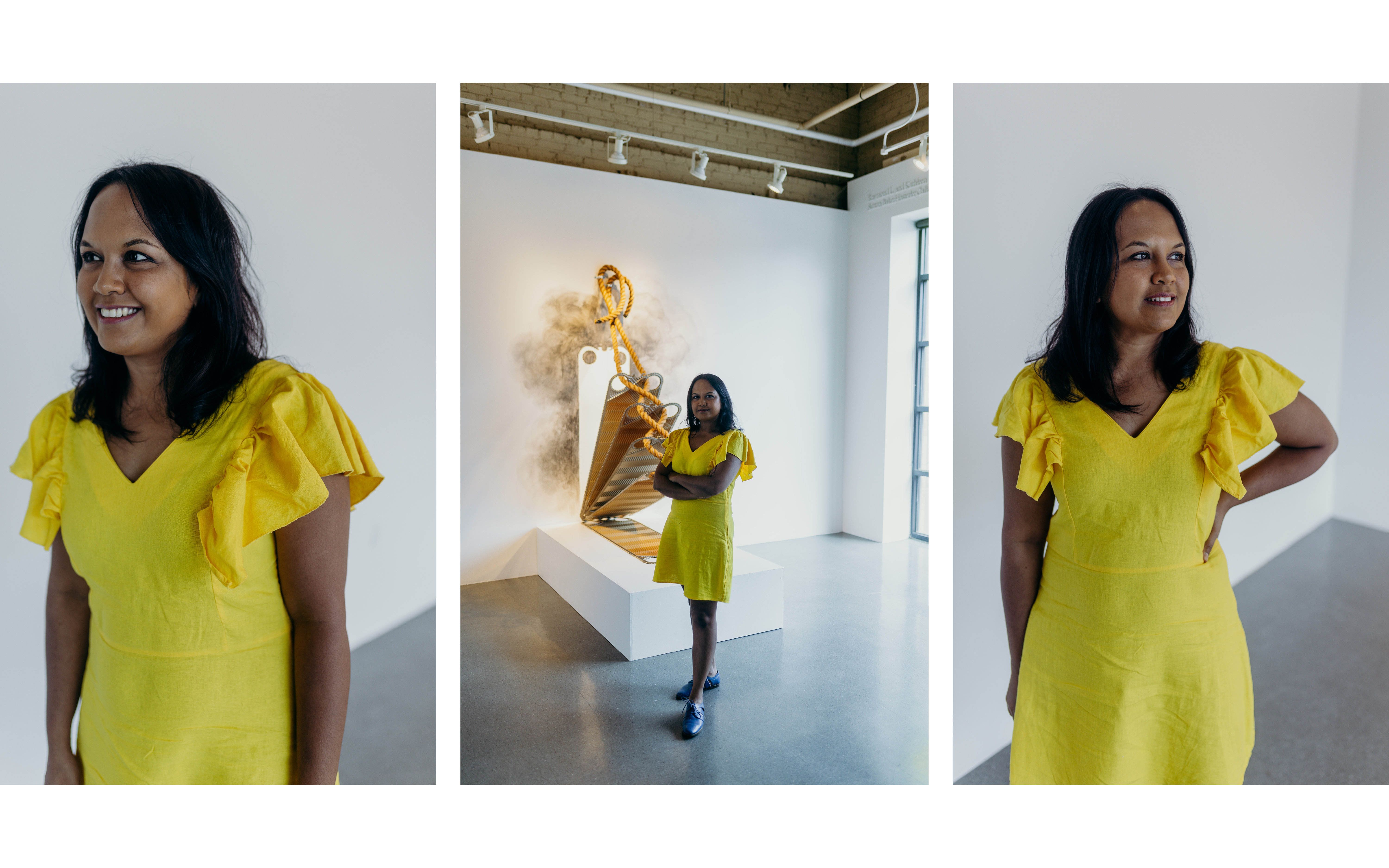
It’s clear that you use many mediums. Was there a point where you really felt like you discovered your style?
I think, through grad school, my focus was on painting and drawing. But I’ve always been interested in these other processes. To me, it is the idea, it’s the concept that’s the driving force. I just started trying out different materials. And it’s really in the last five years, to be honest, that I’ve allowed myself the freedom to experiment wholeheartedly. In my view, if you don't experiment in your work there’s no excitement…there’s no joy, no risk, no discovery. And if you are interested in cultivating curiosity, that continues through life. Obviously there is much to be learned in any discipline if you choose to focus exclusively on it. But for me, it’s important to use different materials.
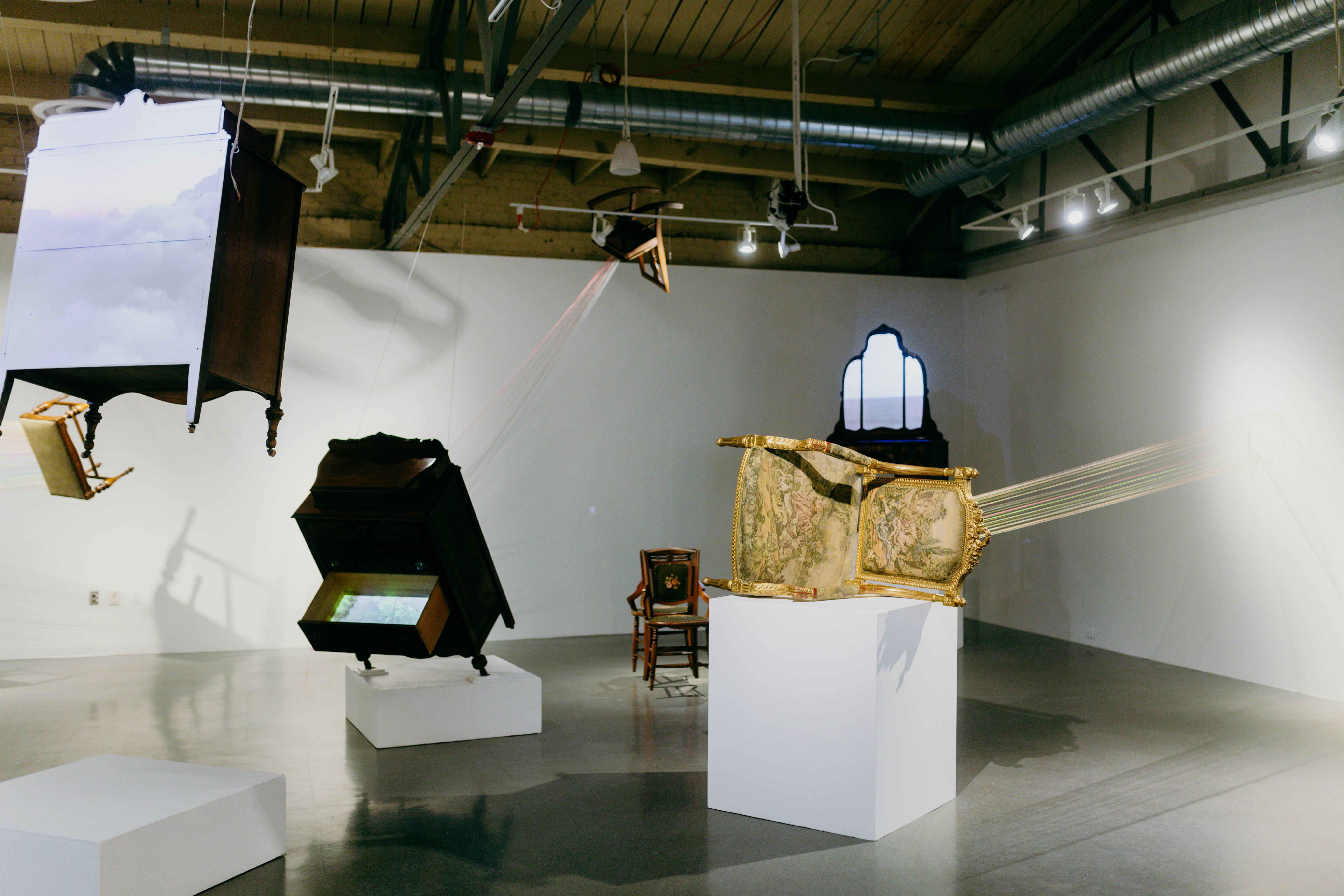


So to go off of that, what does your process look like?
My process is twofold. On one hand, I think there’s a kind of urgency with my work. I collect and surround myself with a diverse array of materials and then I challenge myself to combine them, to see what happens. And that’s the thrill for me. But another side of my process is slow, repetitive and meditative, which is embodied in some of the detailed drawing and fiber processes. Around the corner there’s a large tapestry that’s made from an organic material woven through with knotted fabric. Things of that nature are slower paced. But for the most part, I have an idea and I need to see it realized as soon as possible. So my process amounts to whatever it takes to make it visible and realized. Generally I don’t prefer to have multiple projects going at once. But sometimes you have to, such as for a show this size. For the most part, I have an idea and I want to see it through.
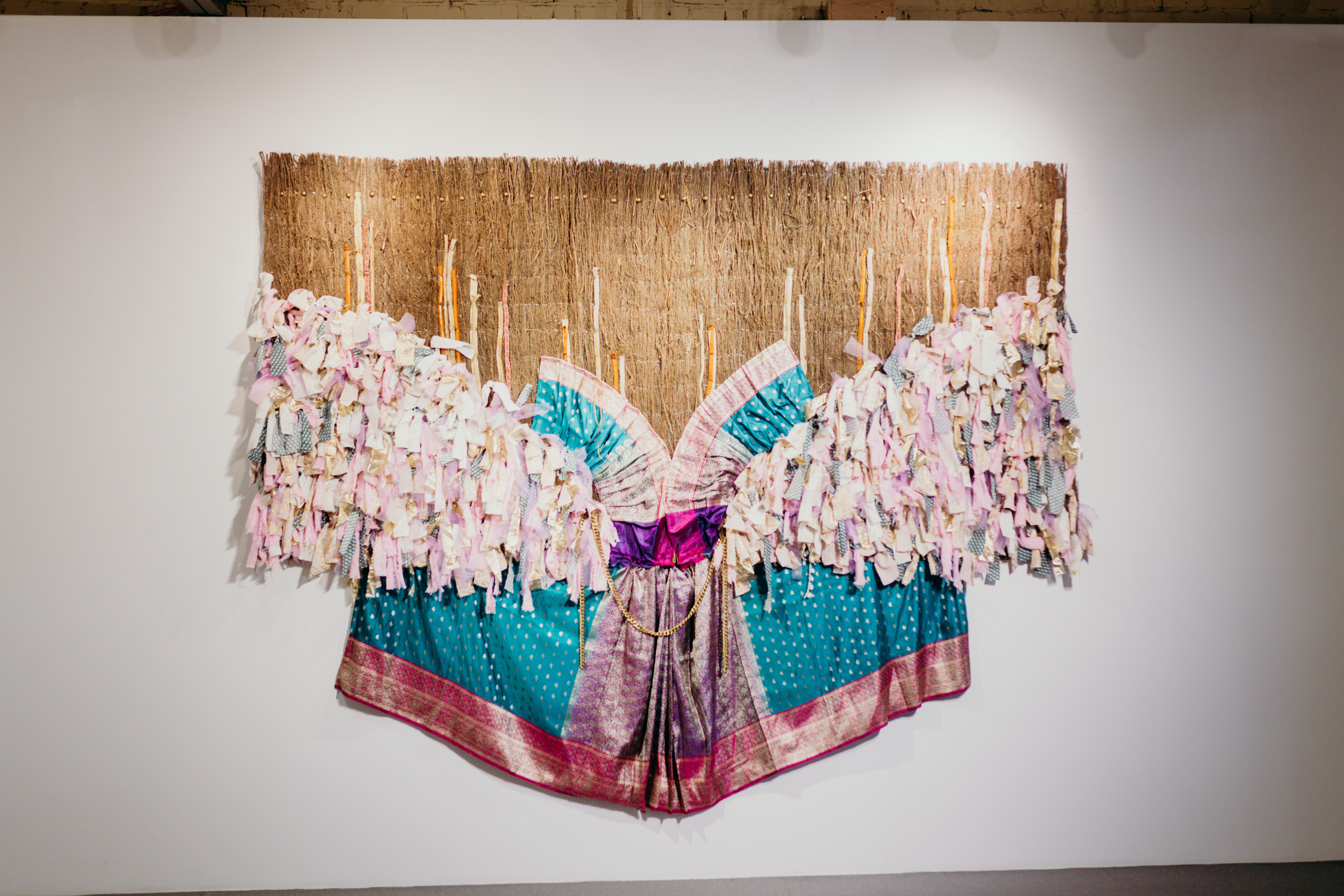
That’s beautiful. So what’s the story behind this exhibition?
So for this exhibition I started with the British colonial period, primarily because my great grandparents were indentured laborers from India, which was the largest British colony. I was really interested in the history of that particular moment so I started researching and then came upon a lot of old prints and materials. In a way, I wanted to tell the specific story of my family but through a historical lens. I wanted to have a conversation with the past. And so that became the starting point. It’s not so much a show that deals with that political moment as such, but one that explores the trajectories relating to race, gender, etc. that resulted from that moment. And so I started thinking about my grandparents…my grandmother was a professional seamstress, my other grandmother sewed all her clothes, so I’ve always been interested in domestic crafts. Ever since I was eight I crocheted and sewed—I loved to make things with my hands. So that love comes into play in my choice of materials. Those materials are of the domestic sphere, mostly of women.
When you open it up to everything you know that becomes a viable material it’s a relief in a way, because everything is possible. Everything and anything.
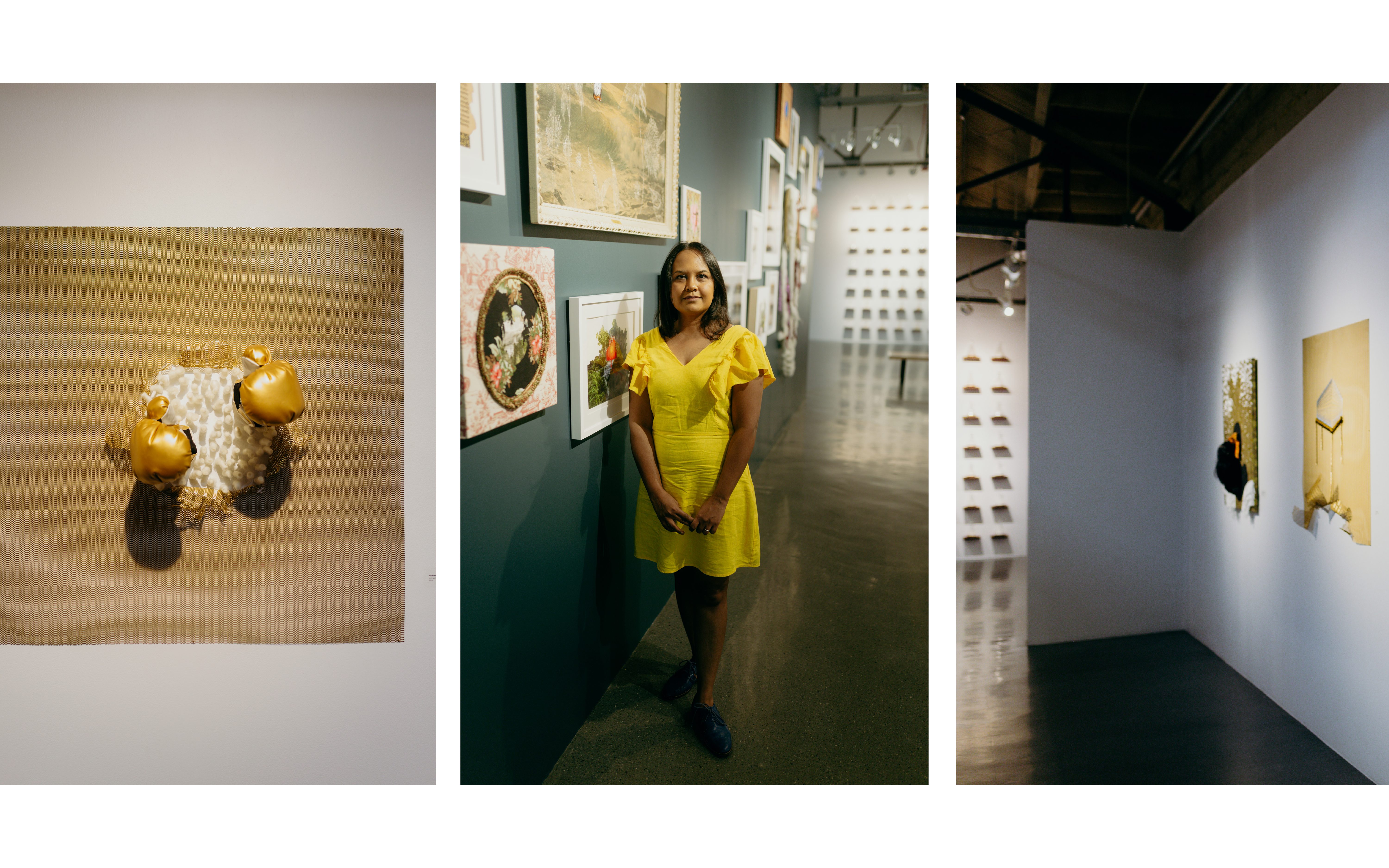
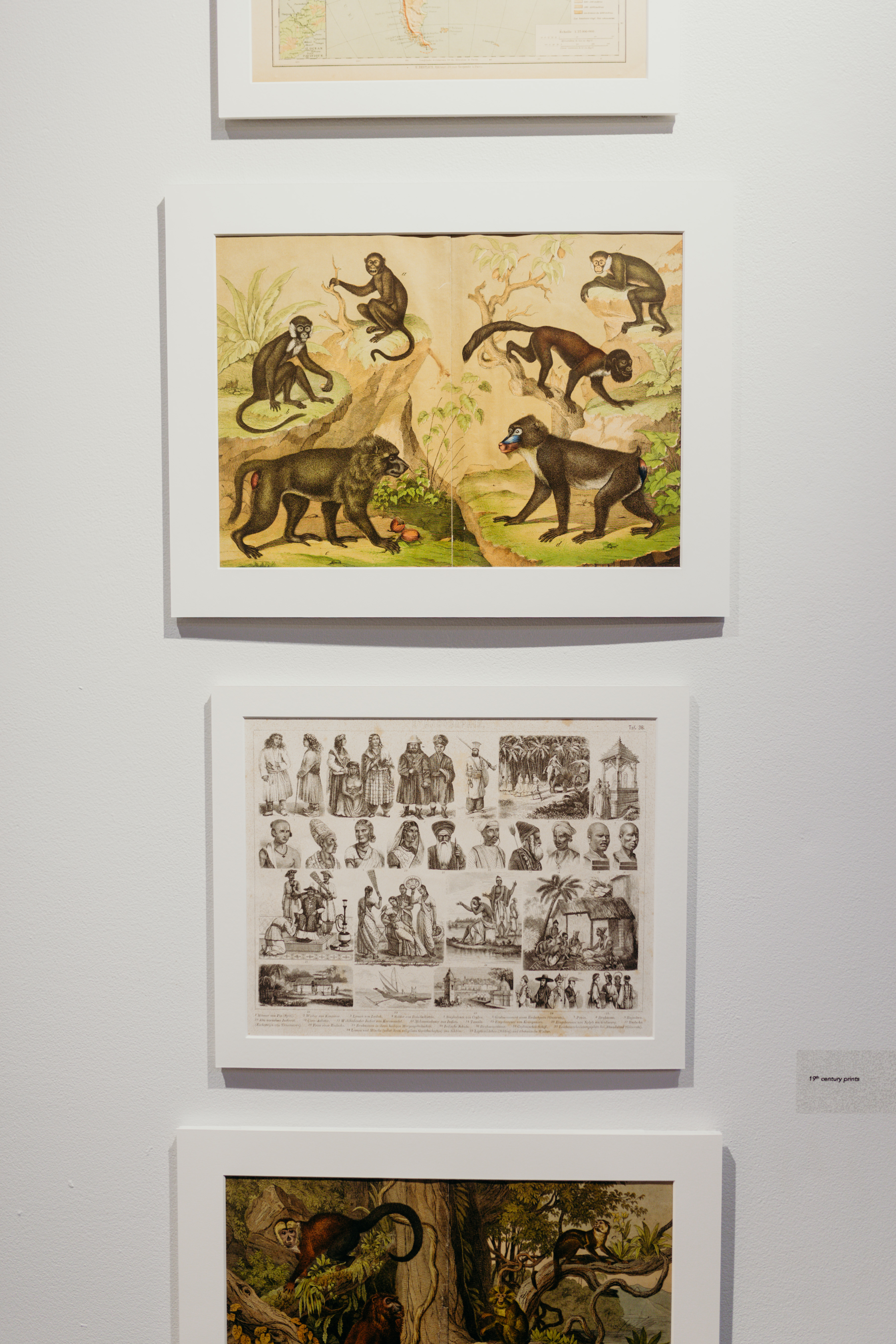
For you, is the exhibition more of a story than commenting on that moment?
It’s both. There is a work behind the curtain that is a video work. It’s a border crossing that I visited and captured video of while in motion. I’m interested in the disorienting nature of migration and the experience of an immigrant or a traveler or a nomad. I want to reflect on that experience because I have been moving around from place to place, continent to continent, my whole life. So, there’s that disorienting experience that becomes maybe psychological rather than political in terms of commentary. It’s a process of teasing out the social issues through the personal/interior.
What’s the most difficult thing about being an artist?
There are many things (laughs). One is navigating the art world. That’s more difficult for some than others. I’m an introvert, I work a lot by myself, and I am a mother. I feel as though being a woman and being a mother can make it difficult, given some people’s preconceptions. It’s not a world for someone like me. I think that’s probably the hardest part…dealing with that context.
And then, in terms of making, you always want to be better. There’s always that internal struggle and you’re never fully pleased. People on the outside sometimes think art making is glorious and “fun.” But it’s a challenge, all of the time.
What’s one of your biggest failures?
There are small failures and large failures. Every day there is a failure of sorts. I think not having had the courage to be a full time artist sooner would be one of my biggest failures.
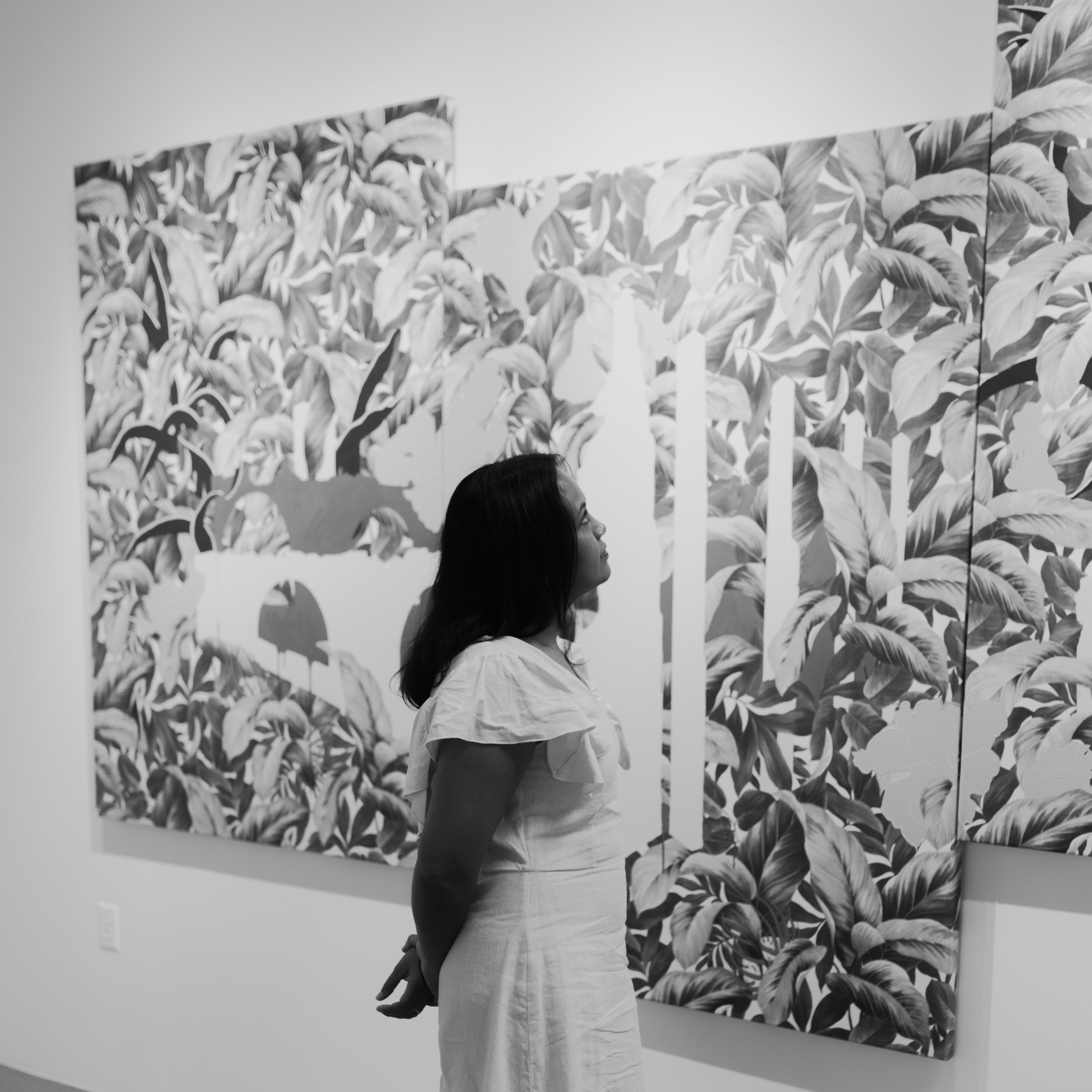
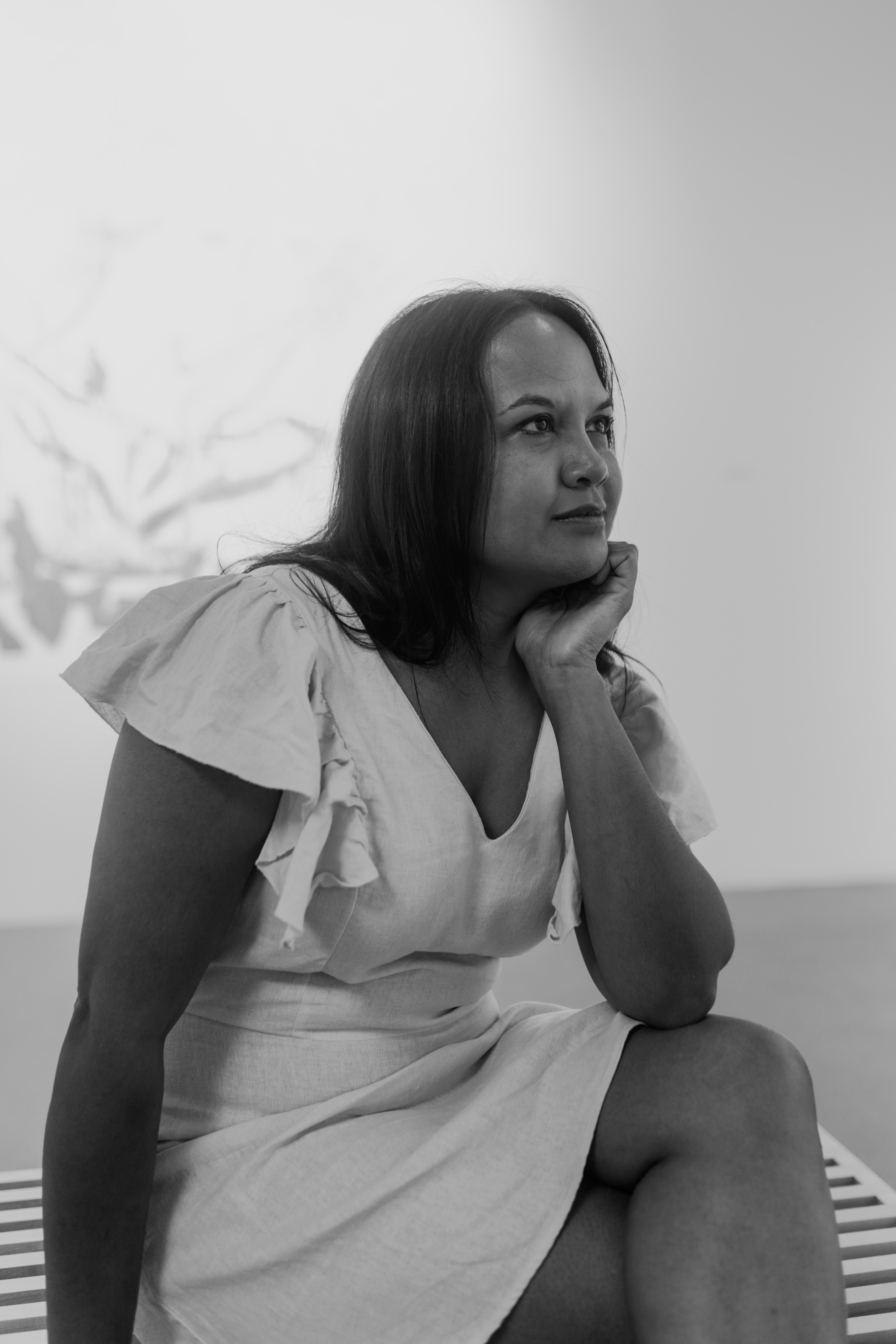
On the flip side, what is one of the most rewarding things?
I need to think about this (laughs), there are so many rewarding things. The fact that I get to wake up every morning and go to my studio and make work, that’s amazing. But to offer the world a poetic moment in the madness that we live in—to create—that’s exciting. Creating is the ultimate experience for many. And to get to do that is both a privilege and a challenge.
Love it. How did you get involved in the Octopus Initiative project?
I received a call quite some time ago inviting me to be a part of it. I was very excited. I was fascinated by the idea of being a part of a lending library and about the possibility of art being accessible to everyone.
What do you think about people who win a work in the lottery, who get to live with your art?
I love it. The idea that more people get to experience an artist’s work…I think it’s amazing. I personally have other artists’ work in my home through trades and what not and I love thinking about that work in my own space. Offering that experience to others is a great objective. Supporting the Denver art community is also wonderful.
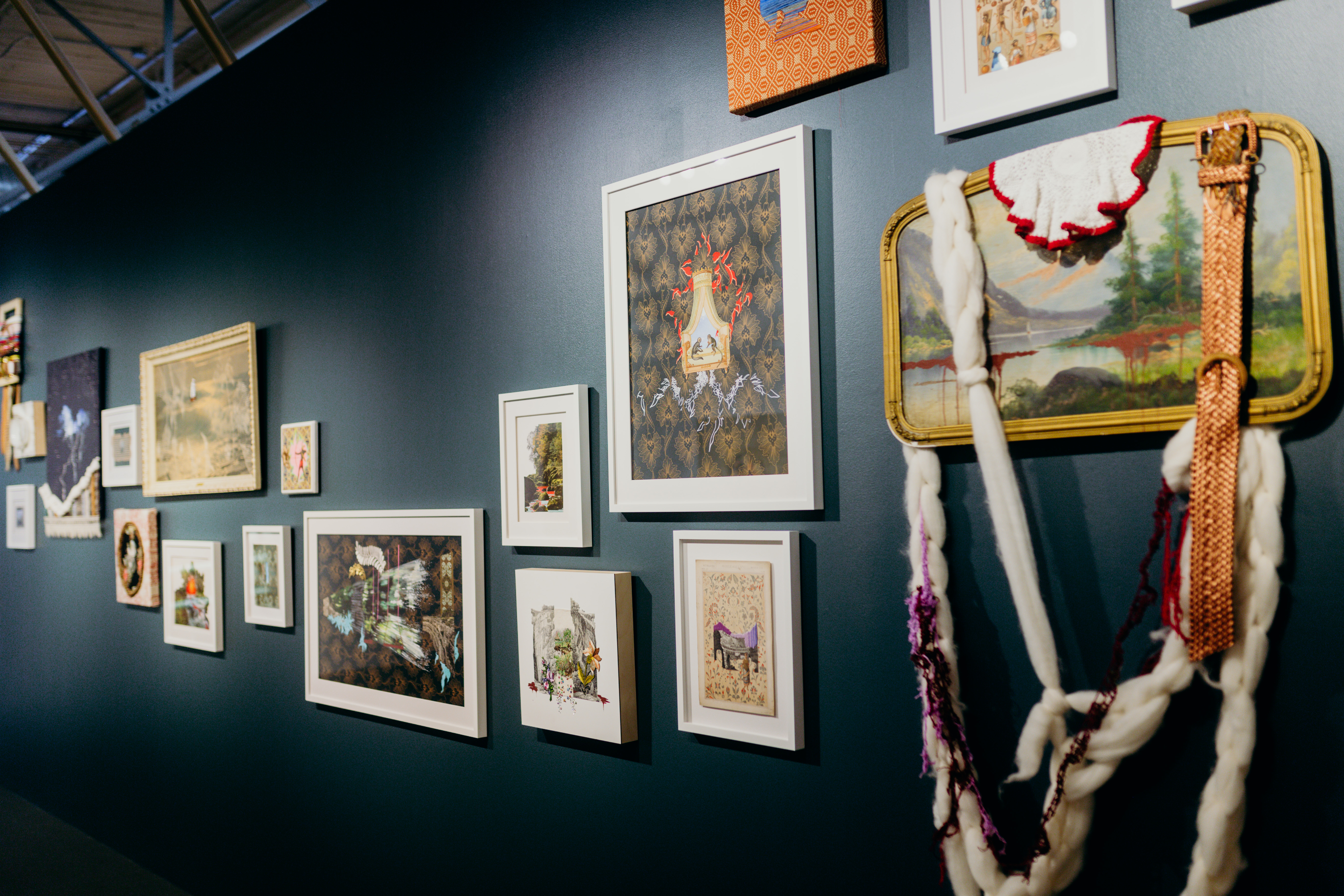
Have you met anyone that has your artwork?
Yes, actually. I met someone recently who came to my opening and has a work in her home!
Is there anything in particular you hope people get from your artwork?
Yeah. I’m thinking about my next project…it’s interesting for me to work within a certain curatorial theme. My work tells stories and I hope people can identify with those stories. I think the best art comes from the personal but speaks universally. I don’t expect anyone to understand specifically what these things are about, but rather, to get a sense of the complexity of culture and to think about that complexity in global terms.
Your color palettes are so bright and fun. Where do those come from or what inspires your choice in your colors?
I was thinking about color this morning actually because someone came through the exhibition to chat. Sometimes one can dismiss bright colors as merely alluring, but a lot of these colors actually come from Indian miniature paintings, textiles, saris, etc. In a Western context they’re fun and jubilant and in other contexts they have a totally different meaning. One of the things that’s important to me is for people to be open to new and challenging ideas. There is a sense of joy to the work even amidst seriousness. Yes, there are bright colors, but there are a lot of complex cultural undertones.
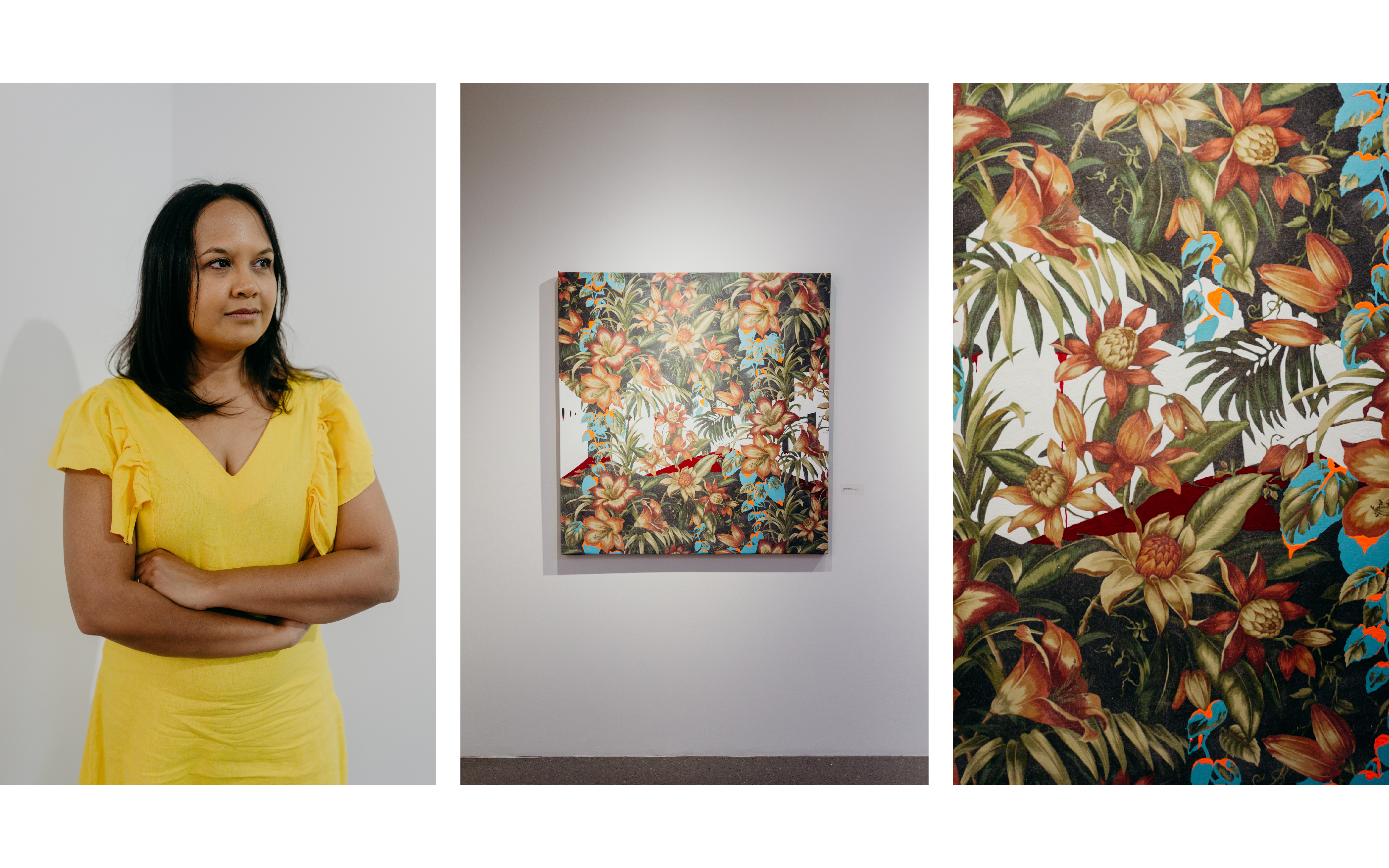
Totally, thank you. It is so important to understand the context. So you have this exhibition and then what else is next for you?
I have a solo exhibition in November in Austin, a couple of group exhibitions in London, Denver, and Washington, D.C., an art fair with K Contemporary, and then next March I am participating in an international biennial. I’ve been commissioned to create a very large-scale project. I’ve been doing research and traveling around the world to collect video and other materials. I’m really excited for that project, as I’ve never done anything like it.
